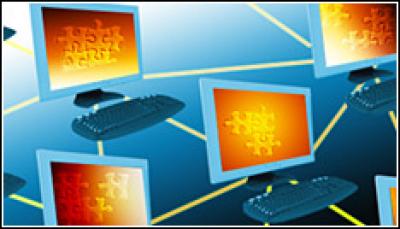Blade Network Technologies introduces RackSwitch G8264 to accelerate data centre adoption of 10G and 40G, the company said on 14 October.
The RackSwitch G8264 is a single-chip 40 Gigabit Ethernet top-of-rack switch that delivers more than one Terabit of low-latency throughput to the data centre. Based on a non-proprietary TRILL platform, the switch is designed for high-performance computing clusters, cloud computing, algorithmic trading, and other I/O intensive and highly virtualised workloads, Blade said in a statement.
“Our new switch is designed for today’s most demanding requirements at the data centre edge to interconnect highly utilised servers equipped with 10 Gigabit Ethernet and provide seamless migration to 40 Gigabit upstream networks,” said Vikram Mehta, Blade’s president and chief executive.
“Unprecedented” speed

The switch features 48 SFP+ ports for 10Gb Ethernet and four QSFP+ ports for 40 Gb Ethernet uplinks. The four QSFP+ ports are native 40 Gb Ethernet, which can be split into 16 additional 10 Gb Ethernet ports, for a grand total of 64 possible ports on the switch. With 1.28 Terabits of non-blocking throughput, the latest addition to the RackSwitch product family brings “unprecedented” speed and intelligence to the edge of the network, Blade said in a statement.
“Today’s data centres are generating more and more data, which calls for a new generation of powerful data centre edge networking that can deliver information as rapidly and efficiently as possible,” said John Abbott, chief analyst at The 451 Group.
The G8264 is a lossless, low-latency, low-power, and low-cost switch with advanced network management capabilities. The Blade RackSwitch G8264 incorporates Explicit Congestion Notification and Weighed Random Early Detection for early warnings about possible network congestion that can impact application performance. Packet flow from servers is monitored and controlled to avoid large saw-tooth fluctuations in network throughput.
The switch utilises an “ultra-efficient” single-chip switch fabric to operate with low, deterministic latency, consistent bi-directional throughput at line rate across all port combinations, and better microburst absorption for greater reliability, Blade said. The switch also boasts ultra-low power consumption, at just 5.8 watts per port.
“To ensure that edge networks can meet today’s bandwidth needs, today’s top-of-rack switches must combine top performance with virtualisation-aware intelligence and data centre-specific capabilities,” said Lucinda Borovick, vice president of the Enterprise Communications Infrastructure and Datacenter Networks group at market research firm IDC.
Single management access point
Integrating Blade’s VMready 3.0 with Virtual Vision, the switch secures and automates virtual machine migrations. The VMready platform “sees” virtual machines as they move from server to server, and protects the VMs by automatically synchronising network policies among switches and hypervisors, Blade said. With the Virtual Vision centralised policy database, the switch has access to a single point of management for VM traffic and security, Blade said.
The G8264 supports converged data centre network connectivity options including FiberChannel over Ethernet, iSCSI and NAS, as well as support for IBM Virtual Fabric for flexible vNIC connectivity. The company also listed HotLinks and Layer 2 failover alongside standard Layer 2/3 features including stacking, IP PIM multicast, dynamic routing and spanning tree.
Available in November through Blade’s partners, the G8264’s suggested pricing is $22,500 (£14,013). The switch can be configured at $350 per 10 Gb Ethernet port and $1,400 per 40 Gb Ethernet port, the company said.
Spun off from Nortel four years ago, Blade Network Technologies was acquired by IBM for an undisclosed sum last month. The deal is expected to close later this year.





